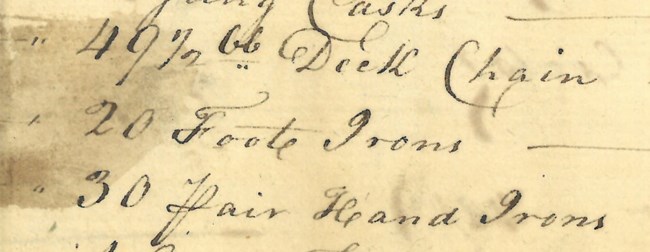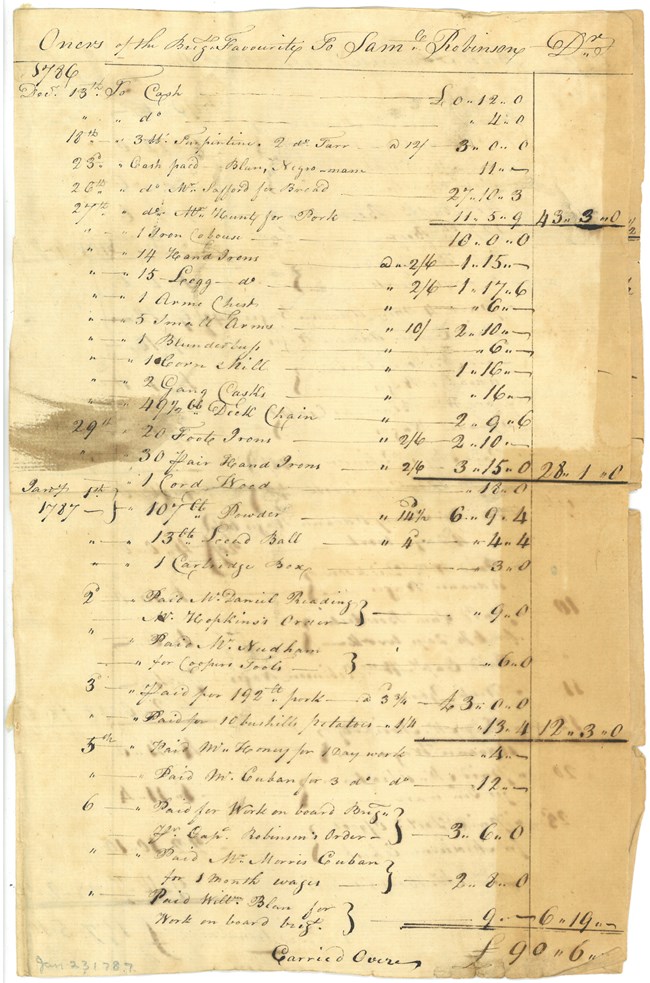Last updated: March 22, 2023
Article
Salem's Maritime Economy of Slavery
“The effect of the slave trade was manifold. On the eve of the American Revolution it formed the very basis of economic life of New England; about it revolved, and depended, most of her industries. The vast sugar, molasses and rum trade, shipbuilding, the distilleries, a great many of the fisheries, the employment of artisans and seamen, even agriculture-are all dependent on the slave traffic.”
~Lorenzo Johnston Greene, The Negro in Colonial New England, (1942).

Derby Family Papers / Phillips Library, Peabody Essex Museum
NPS Photo / Maryann Zujewski
When we think of American Slavery, Salem, Massachusetts may not be the first thing that comes to mind. Yet the transformation of Salem's waterfront into rows of long, busy wharves and fine homes for wealthy merchant families could not have been possible without slavery and the slave trade.
What some historians refer to as the “business of slavery” was the backbone of New England’s economy. New Englanders not only owned some of the sugar plantations in the West Indies (Caribbean islands), many Salem merchants provisioned them with goods from this region, such as fish, livestock, and lumber. Salem ships returned with sugar, molasses, coffee, and other goods produced by the forced labor of enslaved people.
This 1764 shipping document of Schooner Pembroke, owned by Richard Derby, Sr. illustrates this trade. The left side of the document notes the cargo originating from Salem - wood products, horses, rice, and a variety of fish. The right side lists the goods returning to Salem from Dominica - sugar, coffee, and molasses.

Ward Family Papers / Phillips Library, Peabody Essex Museum
Scan by Peabody Essex Museum
While technically slavery ended in Massachusetts in 1783, that did not stop Salem merchants from continuing to be involved in the economy of slavery and directly in the slave trade. In 1786, Joshua Ward's (1752-1825) vessel, Brig Favorite, captained by Samuel Robinson, voyaged to Africa with the purpose to purchase and sell humans. Note the detail of this document listing items purchased for the voyage - leg irons, foot irons, and deck chain. Was the blacksmith who produced these items also of Salem?
The involvement of the Derby, Ward, and other Salem families in the local and global economy of slavery and the slave trade caused great harm to countless Black people. But that is not the full story. Historical inquiry and interpretation is an ongoing process to incorporate new evidence and perspectives that lead to updated understandings of the past. Black people in Salem’s past stand equally tall as citizens, change agents, and leaders. Their history figures prominently in the landscape of Salem as they shaped and were shaped by it.

Ward Family Papers / Phillips Library, Peabody Essex Museum
Scan by Peabody Essex Museum
“The inclusion of the New World in the international economy ranks among the important events in modern history. Slavery was the foundation of that inclusion in early chapters, and slavery accounts for the growth and importance of the transatlantic trade. Europeans brought 8 million black men and women out of Africa to the New World between the 16th and 19th centuries, and slavery transformed the Atlantic into a complex trading area uniting North and South America, Europe, and Africa through the movement of men and women, goods, and capital.
It was slavery that made the empty lands of the western hemisphere valuable producers of commodities and valuable markets for Europe and North America: What moved in the Atlantic in these centuries was predominantly slaves, the output of slaves, the inputs to slave societies, and the goods and services purchased with the earnings on slave products.”
~Barbara Solow, “Introduction,” in Slavery and the Rise of the Atlantic System, (1991).
